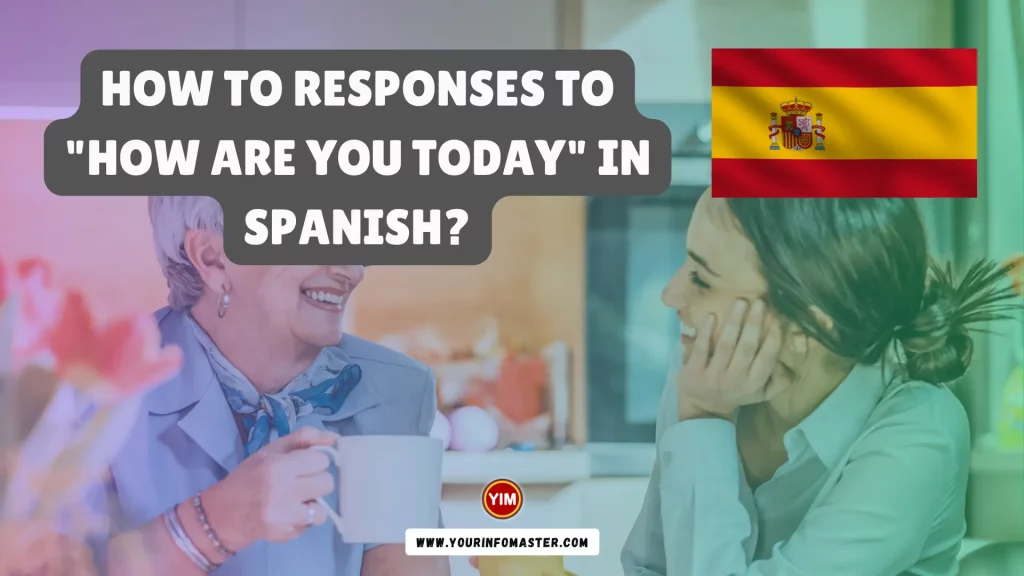Have you ever wondered how to add a touch of flavor to your everyday conversations in Spanish? It’s quite common to respond with a standard “Bien” or “Muy bien” when someone asks you, “¿Cómo estás?” or “How are you today?”
But if you’re eager to infuse some excitement into your interactions, fear not! In this blog post, we’ll explore alternative responses that will be universally understood, allowing you to add a pinch of excitement to your Spanish greetings.
Get ready to spice up your life and make those conversations even more engaging!
Check also: Spanish Strong Vowels and Weak Vowels
Why should we learn Spanish Greetings
Cultural Awareness: Learning Spanish greetings helps us understand and appreciate the customs and traditions of Spanish-speaking communities, fostering cultural awareness and respect.
Effective Communication: Knowing Spanish greetings allows us to engage in more meaningful and friendly interactions with native speakers, leading to better communication and relationship-building.
Enhanced Travel Experience: When traveling to Spanish-speaking regions, mastering greetings enhances the overall travel experience, enabling us to connect with locals and immerse ourselves in the local culture.
Most Spoken Spanish Greetings
Here are some possible responses to “¿Cómo estás?” in Spanish:
- Bien, gracias. ¿Y tú? – Fine, thank you. And you?
- Muy bien, gracias. – Very well, thank you.
- Estoy bien. – I am doing well.
- Regular. – Okay / so-so. Same as usual.
- No muy bien. – Not very well.
- Mal. – Bad.
- Más o menos. – More or less.
- Estoy cansado(a). – I am tired.
- Feliz. – Happy.
- Triste. – Sad.
- Emocionado(a). – Excited.
- Preocupado(a). – Worried.
- Enfermo(a). – Sick.
- Contento(a). – Content.
- Estoy ocupado(a). – I am busy.
- Bastante bien. – Good enough.
- ¡Buenísimo! – Great!
- Mal. – Bad.
- Malísimo. – Terrible.
- Igual que siempre. – Same as always.
- Así, así. – So-so.
Remember, the response you choose depends on how you genuinely feel and the level of familiarity with the person you are speaking to.
Check also: Spanish Verb Escribir Conjugation, Meaning, Translation, Examples
Conclusion
In conclusion, knowing how to respond to “How Are You Today” in Spanish opens up opportunities for engaging and meaningful conversations with Spanish speakers, fostering connections and cultural understanding. Whether you opt for the standard responses or explore more nuanced replies, embracing these expressions adds vibrancy to your interactions and enriches your language journey.
If you really enjoyed the article about “How Are You Today,” then I would be very grateful if you’d help it spread by emailing it to your friends or sharing it on Twitter, Instagram, or Facebook. Thank you!
Have you read “How Are You Today?” Which of these blogs are you reading, and how is it similar to one of them?
Read More
- Spanish Verb Esperar Conjugation, Meaning, Translation, Examples
- Spanish Verb Dejar Conjugation, Meaning, Translation, Examples
- Spanish Verb Llamar Conjugation, Meaning, Translation, Examples
- Spanish Verb Pasar Conjugation, Meaning, Translation, Examples
- Spanish Verb Morir Conjugation, Meaning, Translation, Examples
- Spanish Verb Trabajar Conjugation, Meaning, Translation, Examples
- Spanish Verb Deber Conjugation, Meaning, Translation, Examples
- Spanish Verb Creer Conjugation, Meaning, Translation, Examples
- Spanish Verb Sentir Conjugation, Meaning, Translation, Examples
- Spanish Verb Estudiar Conjugation, Meaning, Translation, Examples

